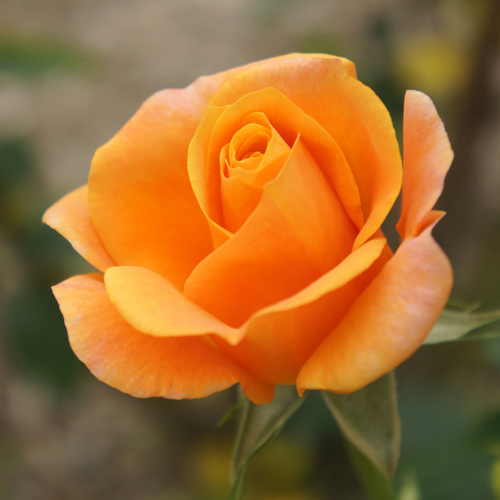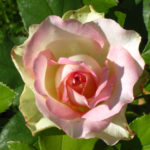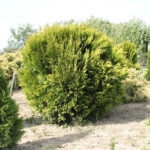Rose Remy Martin
The queen of flowers with brightly colored buds can cheer you up, even if you are deeply depressed. This concerns the Remy Martin varieties in the first place. Its flowers have such a cheerful color that when you look at them, a feeling of celebration appears in your soul. Get yourself such a rose, and your everyday life will cease to be boring and gloomy.
History of creation and description of the variety
The Remy Martin variety comes from the fruitful work of breeder Rene Royon. It was bred in France in the last century, namely in 1995. Other culture names: STARqueli, Magic Lantern.

The noble plant belongs to the floribunda group. This perennial looks very elegant: just imagine a stately shrub with a height of 1.5 to 1.8 meters, with branched, thornless shoots and dense, dark green foliage with a semi-glossy sheen. The crown of a rose in girth is no more than a meter. In the spring, the culture acquires pointed, elongated buds, consisting of 25-35 petals. Dissolving, they turn into double, cup-shaped flowers with a diameter of 6 to 8 cm, a copper-golden hue with apricot notes. During the flowering period, the extreme flower petals acquire a pinkish color. The flowers of this plant can be either single or formed in inflorescences of 2-5 pieces. They emit a rather intense, but at the same time pleasant, soft and unobtrusive aroma. Flowering culture is long-term, abundant, repeated. It begins in the month of May and lasts about three weeks.
The beauty of floribunda is practically not susceptible to fungal and bacterial diseases. True, its resistance to powdery mildew is somewhat higher than to black spot. Lush flowers of graceful Remy Martin do not lose their impeccable appearance under the influence of rain. In the sun, the petals of a cheerful rose do not fade and do not bake. The variety has an average winter hardiness: it can withstand frosts down to -23 ° C. For this reason, the rose needs shelter with the onset of cold weather.
Features of agricultural technology
Remy Martin prefers sunny places, but develops well in partial shade conditions. It is advisable to place it in an open space where there is good air circulation. This will help to avoid the occurrence of diseases on the plant and reduce the risk of attack by pests.
The decorative perennial is demanding on the quality of the soil. It should be planted in loose, moderately moist, fertile soil with a slightly acidic reaction and good drainage. It is in such a substrate that the culture will grow well and bloom luxuriantly. A planting hole is prepared in advance. It should be deep enough so that the roots of the seedling can be freely located in the hole. It is advisable to add organic fertilizer to the planting pit: compost or rotted manure. Floribunda is planted in the spring, while the root collar should be 4-5 cm below the soil level.

It is imperative to take care of the rose. For Remy Martin, regular watering, top dressing, pruning, preventive spraying with an insecticide and fungicide solution, loosening the soil under the bush and mulching are important. Water the plant 1-2 times a week. Consumption of soft, warm water for an adult culture: 1.5-2 buckets. Fertilizers under a flower are applied up to 4 times a year. With the arrival of spring, when the buds begin to swell on the plant, it is fed with saltpeter. In the budding phase, preference is given to fertilizer with a large amount of phosphorus in the composition. After the first flowering, phosphorus-potassium concentrate is added. Finally, in late autumn, the plant is fed with potash fertilizer.
It is necessary to loosen the soil under the bush only after watering, but not immediately, but at least in a day. Following it is mulched with sawdust, humus or peat. The timely pruning of Remy Martin should not be neglected. This procedure is indicated for a decorative perennial from the third year of life. In the spring, weak and dead shoots are harvested, and up to 9 stems are left from the strong ones.In the fall, all the branches of the plant are cut off somewhat, then the rose is covered with dry earth and covered for the winter. Treatment with special preparations in order to prevent the appearance of harmful insects and diseases is required for the plant three times during the growing season.
Use cases
The graceful Frenchwoman is suitable for the design of group and mixed compositions, for single plantings, for planting in mixborders, ridges and borders. Clematis, lilies, irises, geranium, gypsophila, catnip, veronica, fragrant herbs and ornamental cereals can become wonderful neighbors of the culture. Evergreens such as thuja, junipers, short pines and spruces are also suitable for the role of companions. The combination of bright floribunda and delphinium is beautiful. The owner of golden apricot flowers with foxglove and verbena looks wonderful. Remy Martin bushes make spectacular hedges. And this rose is also a magnificent decoration of the gazebo and the facade of the dwelling.









I adore yellow and orange roses, but in my climate almost no one succeeds in them - our summer is very hot, and the flowers very quickly lose their juicy colors, turning into something dirty colorless. But this variety won me over - the petals are resistant to fading, remain bright and attractive for a long time, despite the fact that my bush is located in the very sun. The only thing that happens is that the flowers fade faster, but this is not scary, since a lot of buds are formed. The variety is very resistant to diseases, it gets sick only in rainy weather, it winters perfectly - I bend it to the soil and put it on top with ordinary cloth bags.